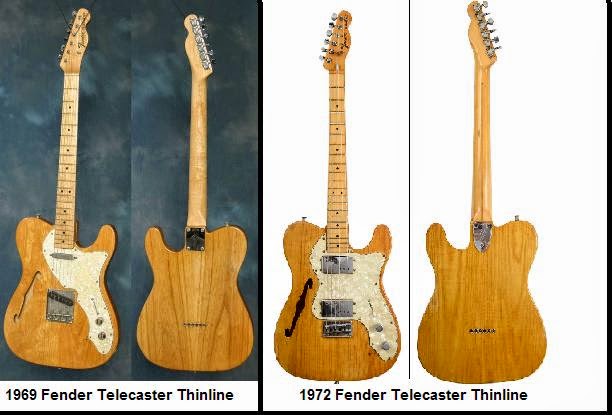 |
| 1967 Telecaster Thinline |
When we talk about those who created and designed the electric guitar, one man stands out as being responsible for the creation of many guitars that became the best known and most desired. That man is Roger Rossmeisl.
| Roger Rossmeizl |
Wenzel put the name Roger as the logo on his instruments. Roger Guitars are somewhat similar to the Gibson L-5 and L-6, but with Rossmeisel Senior’s own touches.
Roger Rossmeisl was sent to Luthery School to learn this craft, and get away from the hardest hit areas in WWII, before returning to work with his father. Roger wanted to go to the United States and subsequently found employment with Gibson, Mosrite, Rickenbacker, and Fender. That must have been an education in itself.
During the British invasion years, perhaps the most desirable guitar was the Gibson ES-335, a thinline, semi-hollow instrument. Fender had nothing similar. All their instruments at the time were built with solid bodies.
Rosmeizl was hired at Fender during the CBS years and these were the years that Fender was functioning more like a corporation. In 1968, orders were handed down to the design team to come up with a hollowbody thinline instrument.
 |
| Except for the P. Bass Rossmeisl designed all of these guitars while a Fender |
At the time, Roger Rossmeisl was working alongside long-time Fender associate Virgilio “Babe” Simoni. Babe began working for the Fender Guitar Company in 1953.
 |
| Babe Simoni |
Later he joined Leo Fender and George Fullerton when they founded MusicMan.
 |
| Back removed from Rickenbacker Capri |
Babe took a Telecaster body and cut a thin slice off of the back side. He then routed out the right rear side of the guitar. A distinctive “F” hole was cut into the bodies top side above the routed area.
The “F” hole design on the Thinline (and subsequent Fender guitars) was Rossmeisl family trademark design.
This same F-hole cut was used on Roger guitars and on earlier versions of Rickenbacker 325’s and 330’s.
The back panel was then glued over the guitars back and sanded. Then the usual routing for the pickups and electronics was performed on the guitars top.
The Thinline was a plus for Fender not just because they now had a semi-hollow guitar and it reduced the guitars weight. Fender’s supply of light ash wood was dwindling, so heavier ash wood or mahogany could be used on the Thinline, thus saving the light ash for other guitars.
The chrome bar that Leo designed to hold the volume and tone controls was replaced by a reshaped pickguard made of white pearl celuloid.
The pickup selector switch, volume, and tone controls were set in somewhat different positions, but the serated chrome knobs were still used.
The 1968-69 version maintained the same pickups and the same style bridge unit as all other Telecasters including its seldom used cover.
The guitar’s neck was originally offered with a maple cap, which was later replaced with a one piece maple neck bearing the typical Fender headstock. The words Fender Telecaster Thinline were spelled out in large letters to show up on television cameras. There was a skunk stripe down the necks rear side on the non-capped models.
The body was offered with a natural or sunburst finish.
The Thinline Telecaster was updated in 1972. Perhaps the motive was to make the Thinline more like a Gibson semi-hollow instrument. I do not believe the public ever equated the Thinline Tele with a Gibson ES semi-hollow body instrument.
Seth Lover had left Gibson and was now working with Fender. Lover had designed a humbucker pickup that was different than what he had produced for Gibson.
He called this the Wide-Range Humbucker.
A new version of the Telecaster Thinline was designed to use these pickups. This guitar’s body remained the same, but the pickguard was again redesigned to accomodate two Fender Humbucking pickups.
The bridge unit on this model was replaced with the same tailpiece that Fender was using on hard-tail Stratocasters. By 1972 Fender was using the 3 bolt adjustable neck and bullet trussrod which became a part of the Thinline Humbucker Tele.
The Fender Thinline guitars never reached the popularity the company desired and they were discontinued in 1979.
 |
| '72 Thinline Tele -made in Japan |
Back in the USA, John Page and Michael Stevens started the Fender Custom shop and produced a 1968-69 style thinline for the USA market. This was available from 1997 to 2000. A special run of the Thinline was also offered in 2005.
\



























